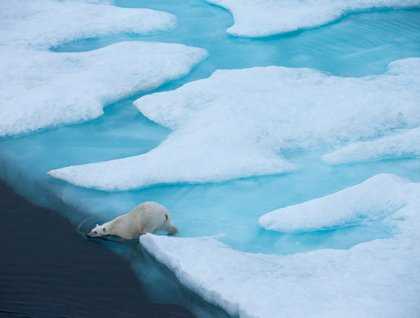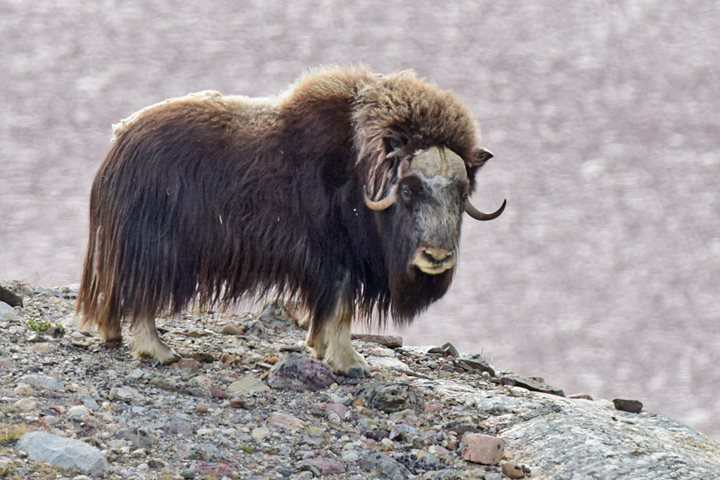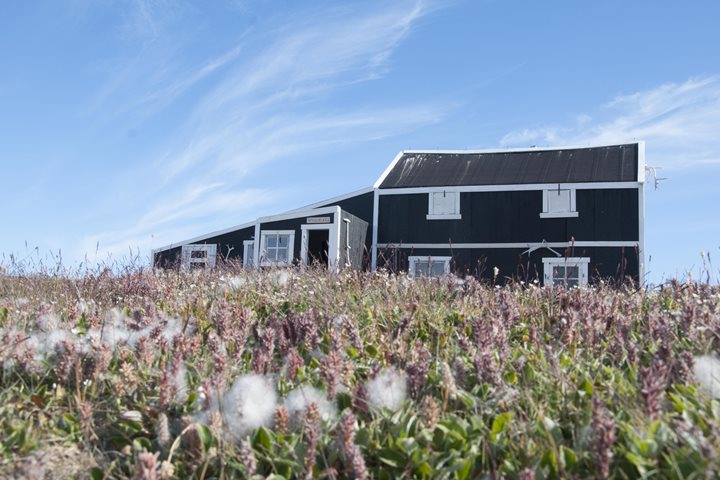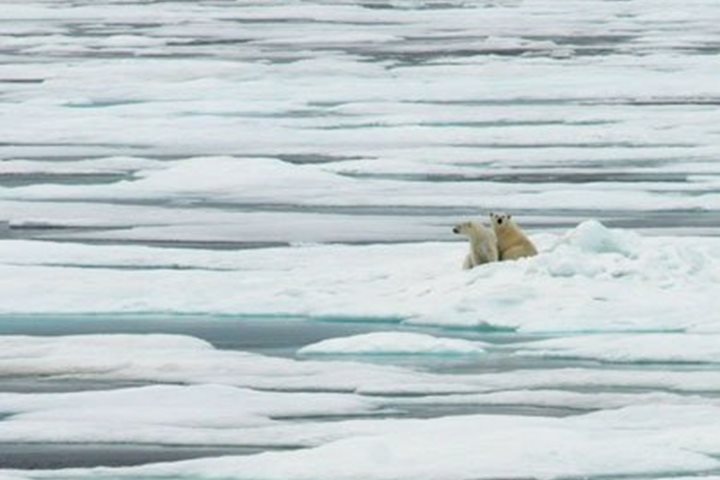The Davis Strait is a broad body of water separating the icy domain of Greenland from the eastern Canadian Arctic to the west. With this being our 10th day aboard National Geographic Explorer since embarking in Reykjavik, Iceland, we experienced something this morning we haven’t felt all trip – ocean motion. Our first breath of wind skimmed across our cheeks on our westerly course towards Hope Bay, about mid-way up the east coast of Baffin Island. Incredibly, not a ripple has passed beneath our keel until now and, with stabilizers out, even this passage of the Davis Strait was a pleasant experience. With our familiar friends the northern fulmars for company we took in various presentations to pass the time as our anticipation for the next chapter in our voyage began to peak.
During our transit up the west coast of Greenland we followed the icebergs on their northerly voyage with the West Greenland Current. By 3:00 p.m. this afternoon we began to encounter eastern Canada’s sea ice with their low, opaque forms caught in the Labrador Current, bound for the warmer waters south of us. As the sea’s surface became more and more choked with ice and the ocean state once again regained it’s glassy sheen we have become so accustomed to, our search for polar bears could finally begin. Mere moments after our sausage and beer feast began on the back deck, our very own captain spotted the first creamy dot on the horizon. As if something tilted the ship on its nose all hands streamed from the stern to the bow to take in our first polar bear of the voyage.
Three bears were spotted initially but the captain zeroed in on a lone bear resting on a tiny floe. Inching downwind towards this older male we were soon face to face with the apex predator of the north. Resting motionless with its head on its paws and nose towards a hole we can only conjecture if it had any interest in what may have created that hole or if it were simply conserving energy. With soft light and icebergs on the horizon, calm conditions all around and a cooperative bear off our bow, we could not have asked for a better introduction to the Canadian Arctic!
But wait!! Remember to never go to bed early in the Arctic! Seconds after typing a period at the end of the last paragraph we received a call for yet more polar bears. Noted over a mile off on the horizon numerous creamy dots could be seen entering and exiting the water on their olfactory journey to stock up on food. Eventually our path crossed one of these determined individuals who made a pit stop to see what we were. This young bear wearily crept up to the edge of a nearby floe, placing itself within whispering range of those on the bow. The only sound that could be heard was the slosh of water against the ship and the patter of shutters opening and closing. For five beautiful minutes this creature graced us with curiosity until caution got the better of it and it scurried off in search of food again.
As our closest bear yet set off on its way the skies began to warm and the sun crept closer and closer to the horizon. As it dipped towards land the final rays of the day began to stretch out beneath the clouds, bouncing off of everything in sight; the ice, the perfectly still waters, our vibrant faces. As this warm glow embraced us and everything around, we were treated to one last pair of bears. A mom and cub in the waning light of day skipped between ice floes before slipping into the water, swimming in echelon into the tangerine sunset.







